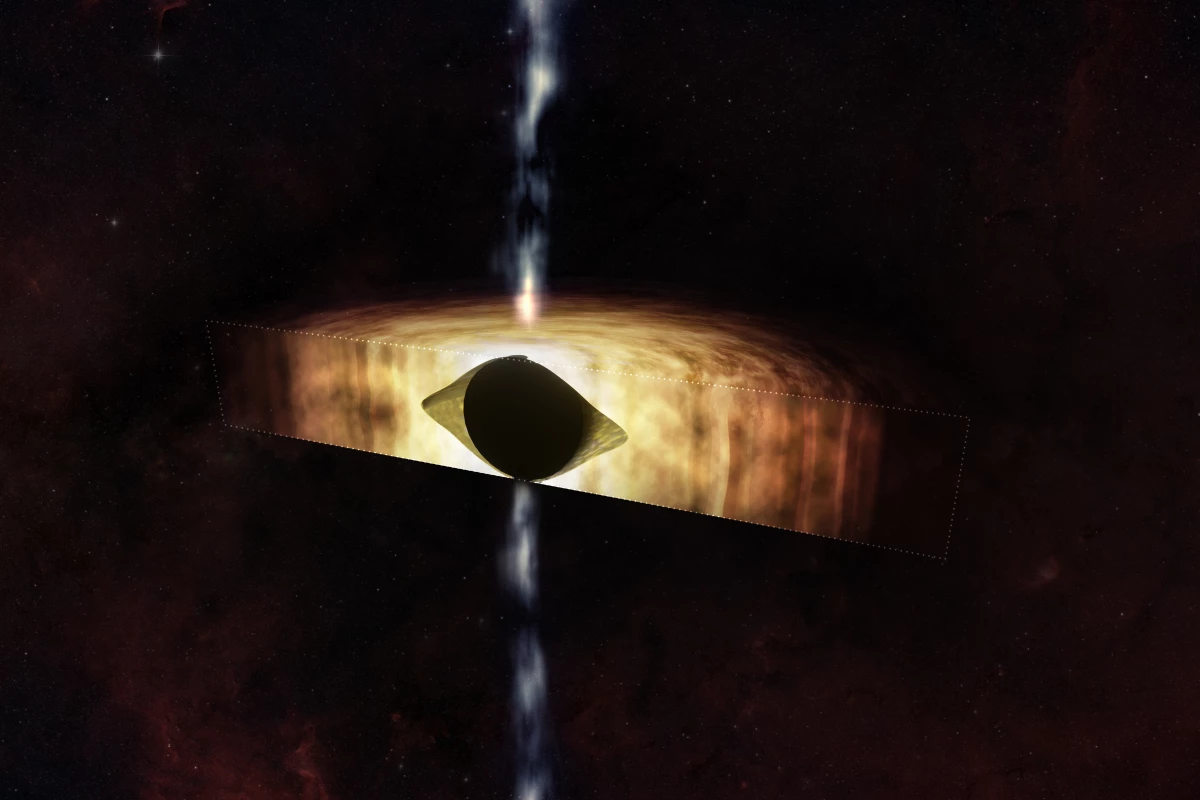A supermassive monster lurks at the center of our galaxy, and astronomers have now discovered that it’s spinning so fast it’s warping the very fabric of spacetime into a football shape.
According to Einstein’s general theory of relativity, mass bends spacetime, a four-dimensional “fabric” that pervades the universe, and the effect is what we experience as gravity. It happens with any amount of mass – you yourself are bending spacetime right now – but it’s barely noticeable until you’re dealing with extremely massive objects, like black holes or entire galaxies.
When that happens, you get some bizarre results. Galaxies can act as lenses that magnify bright objects behind them, letting us see much farther out into the cosmos than usual. Collisions between black holes and neutron stars send ripples throughout the universe. An extremely dense star system has been seen dragging and twisting spacetime. And now, astronomers have found that the supermassive black hole at the center of the Milky Way is doing some weird things to spacetime too.
Known as Sagittarius A* (Sgr A*), this black hole has the mass of about 4 million Suns, meaning it has plenty of heft to throw around on the spacetime continuum. And new research reveals that Sgr A* is spinning so fast that when viewed from side-on, it would squash spacetime around it into the shape of a football.
Astronomers used X-ray data from Chandra and radio data from the Very Large Array (VLA) to calculate how fast Sgr A* is spinning, based on how material is flowing around it. Their study found that the black hole has an angular velocity of about 60% of the maximum possible, and an angular momentum of about 90% the maximum possible.
Of course, you can’t just go around warping reality itself without consequences. The fast spin of Sgr A* throws off a huge amount of energy, which can drive outflows of matter around the black hole. Gigantic X-ray “chimneys” above and below the plane of our galaxy are evidence that Sgr A* was much more active in the past, and it could get rowdy again in the future.
“Although it's quiet right now, our work shows that in the future it will give an incredibly powerful kick to surrounding matter,” said Anan Lu, co-author of the study. “That might happen in a thousand or a million years, or it could happen in our lifetimes.”
The research was published in the journal Monthly Notices of the Royal Astronomical Society in January (and we’re sure it’s no coincidence that the news of a football-shaped spacetime warp was held off until Superbowl weekend).
Source: Chandra




